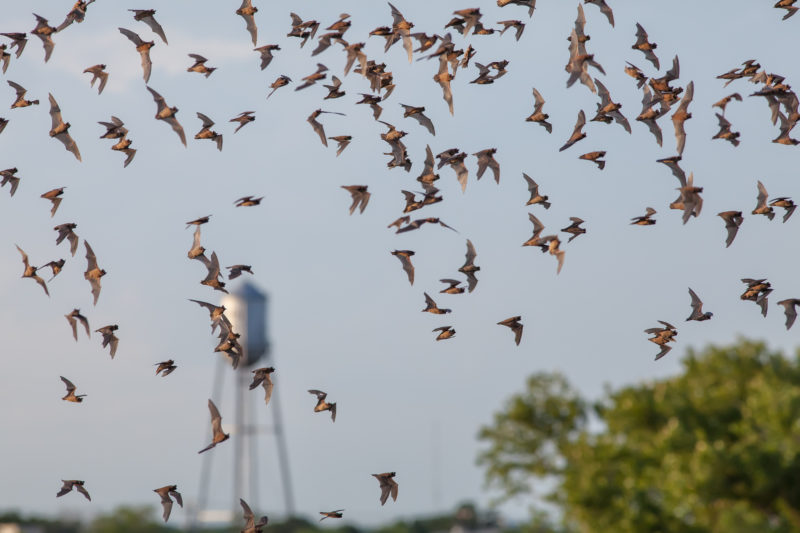For the past few thousand years, bats have proven to be masters of habit. At a cave 20 miles north of downtown San Antonio, 15 million Mexican free-tailed bats are en route to Texas after a warm winter in Mexico. However, these creatures are suddenly breaking their thousand-year routine as they to arrive to Bracken Cave two weeks early. In a new study, meteorologist Phillip Stepanian, a research scientist at the University of Oklahoma, says this change is expected to evolve more with time.
Stepanian explains that over the past 23 years, radar observations from the San Antonio weather forecasts have aided in careful observation of bats coming and going to Texas in the wintertime.
“Using these data, we’re able to make very systematic, high precision measurements to actually see how they’re changing over the course of decades,” Stepanian says.
Mexican free-tailed bats have followed the same migration route to Mexico for a warm winter. The female bats get pregnant and return to Texas in March to give birth. But now these bats are arriving earlier – marking a rare change in the migration timeline.
“We’re starting to see the bats are showing up earlier and earlier in the season,” Stepanian says. “So over the past 22 years, we’ve seen an advancement of about two weeks on their schedule.”
Stepanian says bats’ insectivorian ways indicate the availability of their pest food source: moths.
“By seeing them showing up earlier throughout the year,” he says, “we kind of suspect that we’re probably seeing a lot of these crop pest insects earlier in the area as well.”
Bats contribute significantly to U.S. agricultural services – a whopping $22 billion. Stepanian says it’s still too early to tell if this shift is likely to affect the farmers who depend on bats for their crops as well as the ecosystem as a whole.
“So whenever we start to see them changing, there is a question of are they still able to provide these pest management services effectively?” Stepanian says. “At this point we’re not totally sure. We need to do a little bit more work to see how the moths are changing as well. If the bats are adapting fast enough to keep up with the moths and really how the entire system is changing as a whole and what effect that would have for agriculture in the region.”
The study also reveals that some bats are staying throughout the winter in Texas rather than heading to Mexico. Stepanian says the moths aren’t leaving, so the bats remain to for the advantageous food source.
“We’re finding that over the past 22 years, not only bats are sticking around during the winter, but actually the number of bats are increasing,” Stepanian says. “So, currently we’re seeing up to 300,000 bats in Bracken Cave over the winter. Completely without precedent, wouldn’t expect that.”
Temperature is suddenly not a dominating factor for moths like it used to be, and as a result, bats are changing their long-established routes.
“It’s something that’s a bit unusual, maybe a little concerning,” Stepanian says. “We need to understand: what does that mean?”
Written by Elizabeth Ucles.















